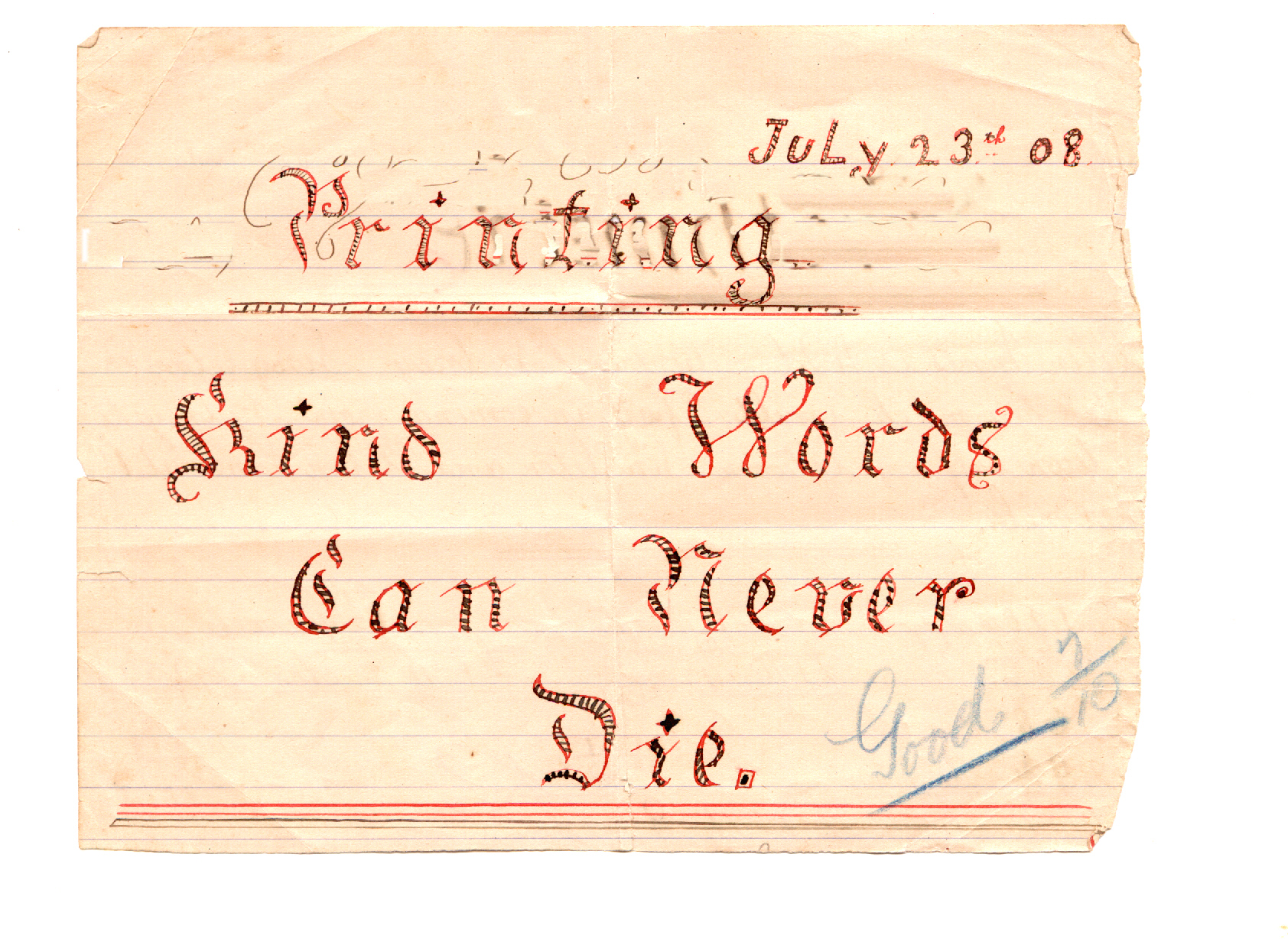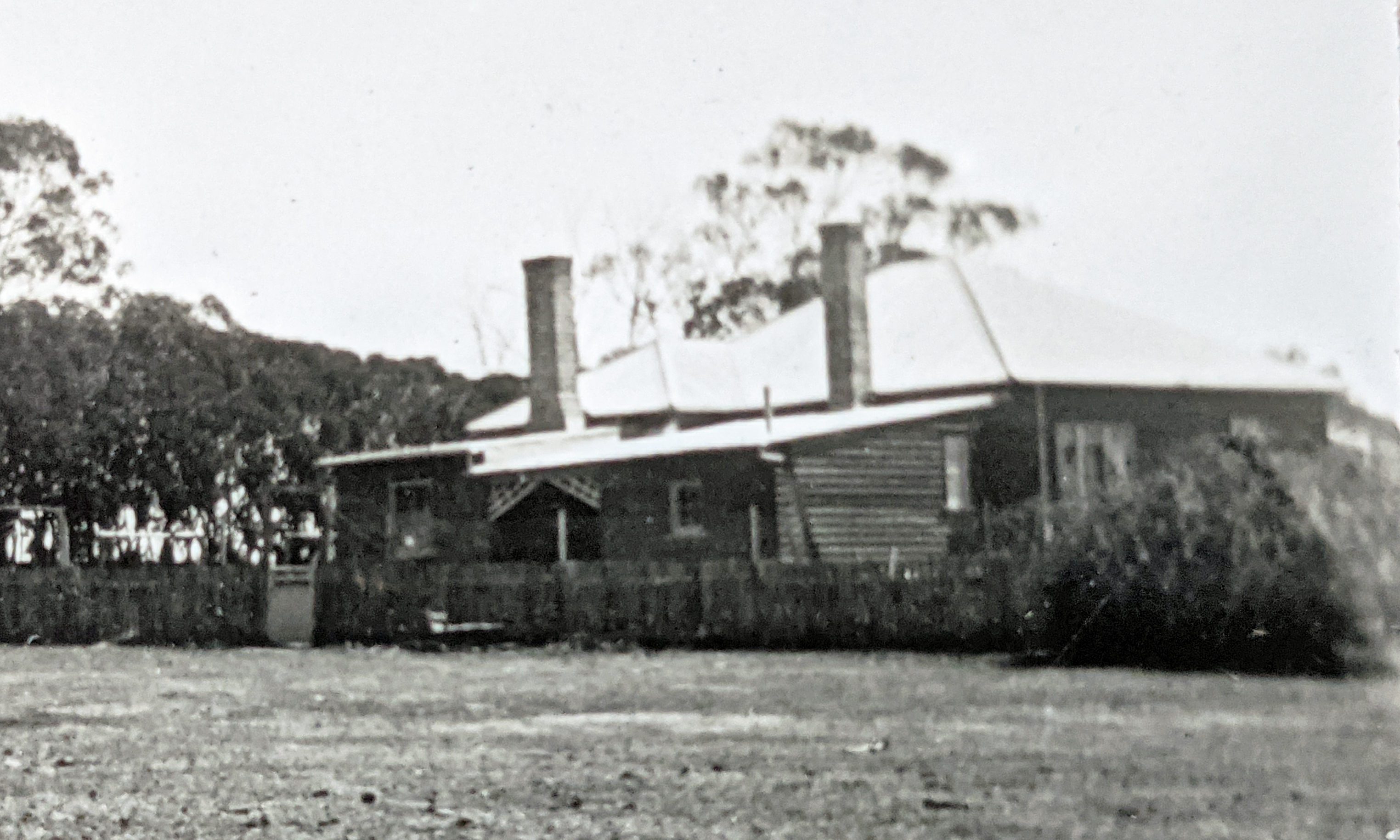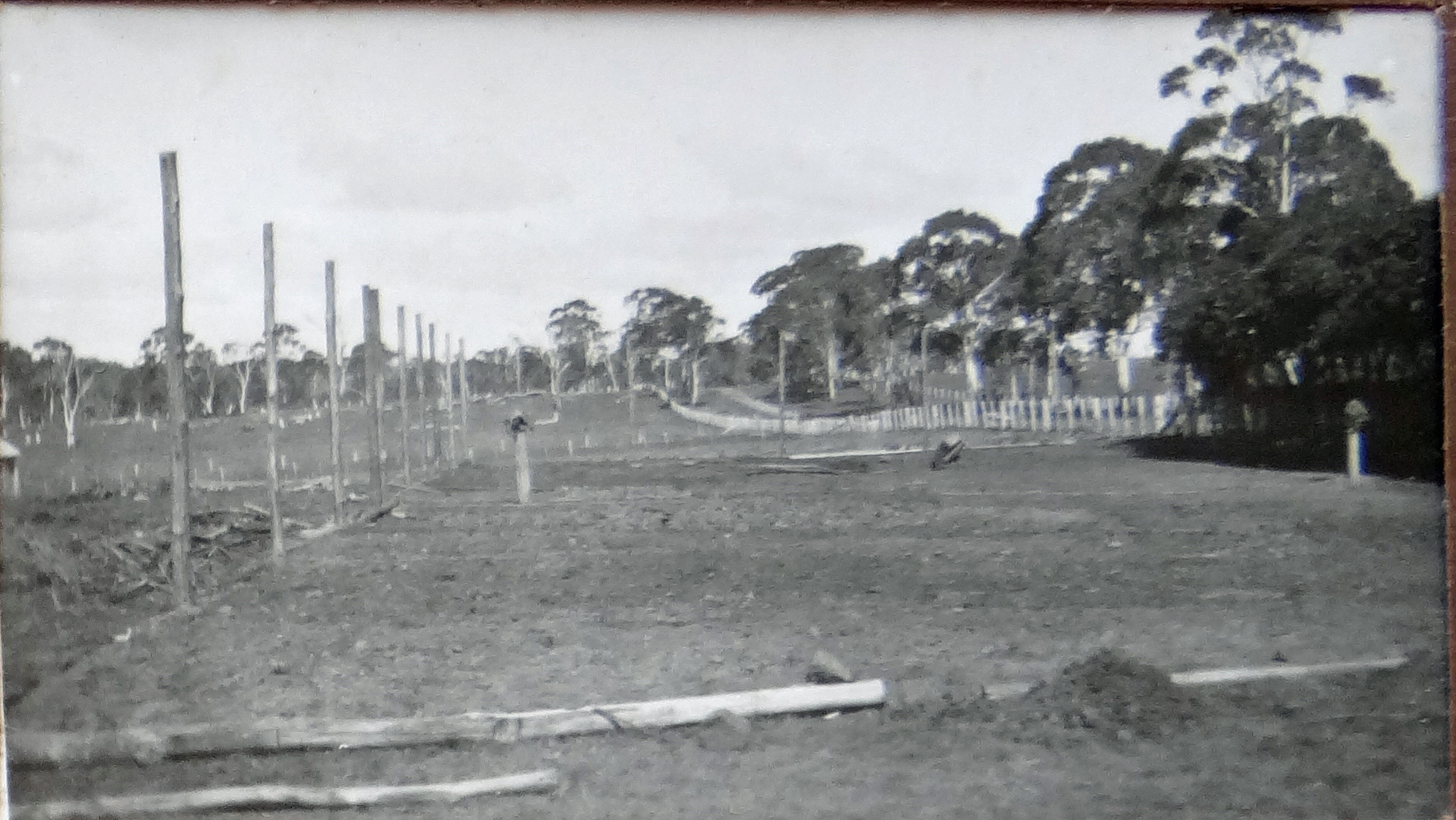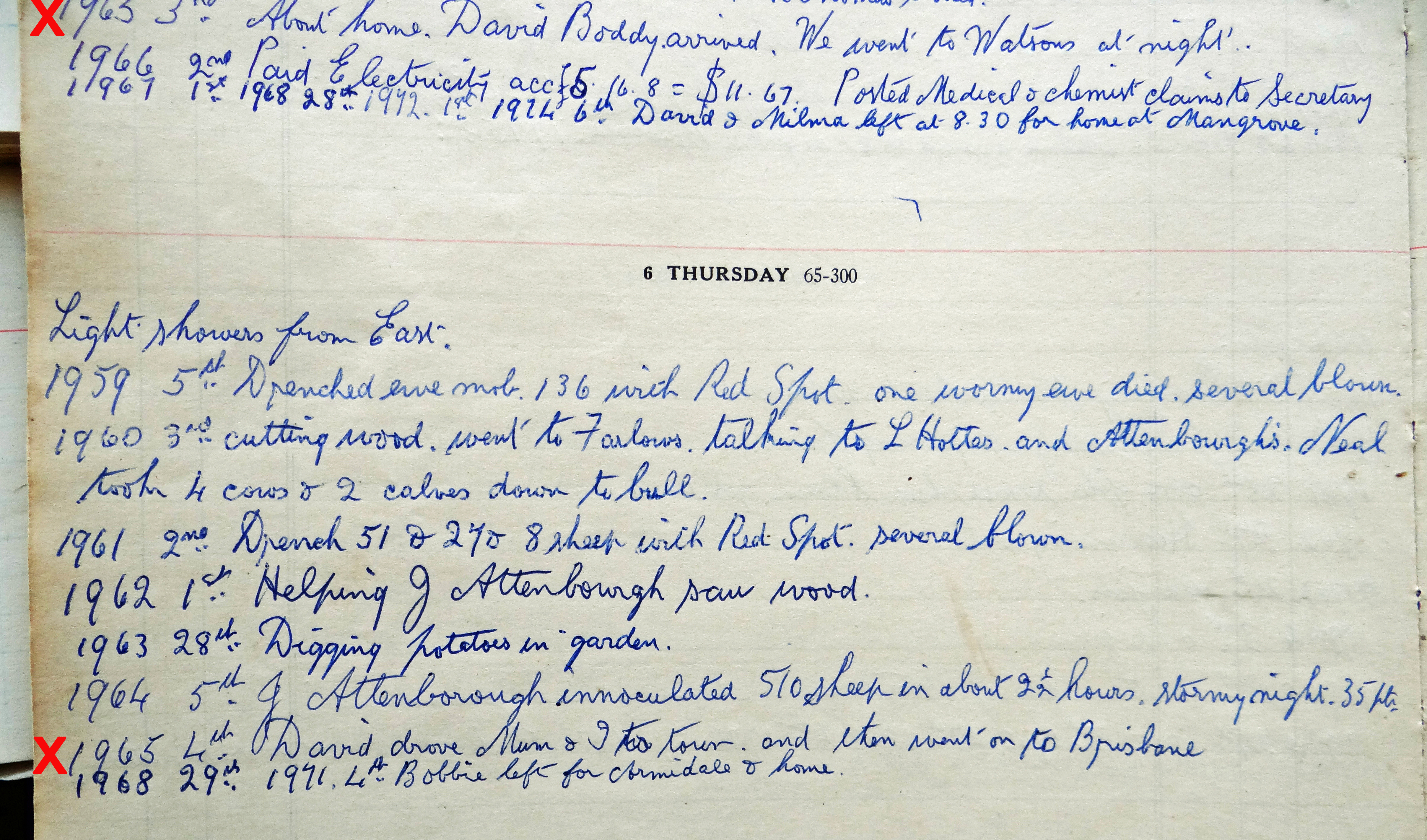
James Henry ("Harry") Davidson (1895-1980)
Line of Descent
to
Helen Glenmire Davidson
William Davidson
John Davidson
David Johnstone Davidson
James Henry Davidson
Helen Glenmire Davidson
return to the Davidson Family Tree
Marriage
Death:
Father:
Mother:
Children:
Isabella Jane (Jennie) Martin, 12 September, 1918, Glen Innes, NSW
23 September, 1980, Glen Innes
David Johnstone Davidson
Sarah Glenmire Farrell
David James (1919-2017)
Norman Graham (1920 - 2021)
Edmund Bramwell (1922-2011)
Helen Glenmire (1923-1951)
Hannah Jean (1924 -2020)
Eric Bruce (1929-2014)

"Harry" Davidson, c1970
Back in the early 20th century, sometime between 1901 and say 1905, Harry, then less than 10 years old, was sent back from the goldfields of Western Australia to the New England area of New South Wales. Did he make the journey all alone? That's a bit confronting for a six-to-10 year old - but there's no other answer readily apparent.
The story goes that Harry was born in 1895, on the Hillgrove gold field, about 30 km east of Armidale. His mother Sarah and his blacksmith father David Johnstone Davidson, already had a son, William, born three years earlier at Hillgrove. In the 1890s, Hillgrove was booming, but maybe David Davidson had the foresight to realise that might not last, and towards the end of the century, he and Sarah packed their two young sons and all their belongings up and headed for another booming goldfield - that of Kalgoorlie, in Western Australia. Soon after they arrived, another son came along - John, born in the first year of the new century.
But three months after John's birth, Sarah died of "enterica" - a type of food poisoning.
David's sister Frances came to the young family's assistance, by travelling across the continent to care for the household. This generous gesture didn't work out as well as could have been hoped. The tale is told that young Harry and his aunt didn't always see eye-to-eye, and Harry was dispatched back to his maternal widowed grandmother Jane Farrell, living on a farm near the village of Wandsworth, 25 kilometres northwest of Guyra in northern New South Wales. How did Harry make the trip? Under the guidance of some other adult? Presumably by sea, from Fremantle or Albany to either Sydney or Brisbane, but no records have survived. Nevertheless, Harry was back in Wandworth by 1907 at the latest (and probably earlier).




Our next look at Harry comes with World War1. Like many other young men, to him the idea of going off to war probably seemed like an adventure - far more exciting than life as a farm labourer. Perhaps to prepare himself for action, Harry had, late in 1914 soon after the declaration of war, joined the Ollera Rifle Club and when he turned 21, in January 1916, Harry enlisted in Armidale, assigned to the AIF's "D" Company, 33rd Battalion. The Army doctor found him fit for service, with the proviso that his "teeth require attention".
Within four months, Harry was on his way to England, disembarking in Devonport, Plymouth on 9 July 1916. He spent the first few months in various training camps in southern England, with at least one spell in hospital, with influenza.
below: We have one postcard which he sent back his grandmother in Australia, from when he was at the Larkhill camp, on Wiltshire's Salisbury Plains, not far from Stonehenge. Harry is in the second row from the front, seated on the ground at the far left.


 His
grandmother never saw this card from her grandson - it is dated 12
September 1916, but Jane Farrell died only five weeks later, on 20
October, before the card would have arrived in Australia..
His
grandmother never saw this card from her grandson - it is dated 12
September 1916, but Jane Farrell died only five weeks later, on 20
October, before the card would have arrived in Australia.. Although Harry had been passed fit at his enlistment, a problem developed when he was in England, and he was found to have an abdominal hernia, which required surgery if he were to continue in the Army. He decided the surgery option wasn't for him, and he was sent back to Australia in July 1917, before he'd seen any enemy action. His return to the New England area was tinged with a little sadness, now that Grandmother Farrell was no longer there. Harry set about leasing some farming property, southeast of Glen Innes, at Lambs Valley, and threw himself into farming, all the while courting an English servant girl who worked at a property not far from his old home at Wandsworth.
Just over a year after Harry's return from England, he and Isabella Jane Martin (known as "Jenny") married in the Presbyterian church at Glen Innes (right). Harry, who was 23 at the time of his marriage and Jenny, aged 26, quickly set about starting their family, all the while working the farm, known as Coonil, at Lambs Valley. A year later, their first child, a son David, was born, followed quickly by two more boys, Norman and Edmund ("Bramwell"). Eleven months after Bramwell's birth, their first daughter, Helen Glenmire, arrived. Another daughter Jean, and their youngest child and fourth son Eric, born in 1929, completed the family.
below: Harry and Jenny with five of their six children in the 1920s. Missing from the family portrait is their youngest son Eric, who was born in 1929 five years after his sister Jean.

Glen Innes Examiner (NSW : 1908 - 1954), Thursday 17 January 1924, page 4
CLAIM AGAINST SHIRE
Mr J. H. Davidson, Lambs Valley wrote the Severn Shire on Tuesday claiming damages for losses due, as he alleged, to carelessness of council employees in burning off blackberries
Damages asked were to compensate the writer as he had practically arranged to lease the property which was burnt out, also the damage to fences etc The president said the onus was on the writer; Cr. Pettit said he travelled the road after the fire, and an employee said he did not light the fire "It is a job to find out who started these fires, as there other one discovered a short distance awav " he added. The letter was received on the motion of Cr. Fraser.
Harry and Jenny put this good fortune to good use - instead of leasing their land, they were able to buy their own property, Wattle Farm, at Red Range, 30 kilometres east of Glen Innes.



Haymaking in 1940


above left: An old Case tractor pullling the plough, and above right: one of the first rubber-tyred tractors in the district (in 1936).
With a family of four boys and two girls, five of them teenagers, one of the first projects undertaken at Wattle Farm was the construction of a tennis court:


Then came the Second World War - and all the Davidson young people went off to war, with the exception of 10 year old Eric...They were scattered across the services, from Navy, to the Air Force, the Army, the Women's Auxiliary Auxiliary Air Force and the Australian Women's Army Service. Harry himself was involved as well. - he enrolled in the Citizen's Military Forces in 1942. Presumably young Eric had a multitude of farm tasks to do in the absence of his brothers and sisters..
Wartime photos of some of the Davidson sons and daughters:

centre right: Bram, Norman and their young brother Eric at Red Range
far right: Helen and Jean Davidson



The years immediately after the war saw most of the family's sons and daughters marrying, with only Norman and Jean staying near Red Range.
The eldest daughter Helen ("Glennie") who married Newcastle railway employee Geoff Boddy, was an early victim of the1950's polio epidemic in Australia, and died in Newcastle in 1951. Geoff continued to bring Harry's eldest grandson David up to Red Range to see his grandparents several times over the following years.
right: Young David and his grandfather Harry Davidson
with sheep on Wattle Farm at Red Range:
Wattle Farm was 365 acres (150hectares) in size. There was no electricity or water supply other than the water tanks of which there were quite a few. Every roof had a tank attached to catch what rain there was.
There were plenty of roofs to collect water from. Besides the house, there was the sheep shed, the milking shed, the car shed and the dairy. The chook shed was more of a shelter to protect the chooks from foxes and didn't have a tank from memory.
The farm had cows, sheep, fowls, dogs, two draft horses (named Star and Dandy) and another horse referred to as the race horse who seemed to be an ignored pet. Left on his own, he avoided the world, staying as far away from people as possible.
The cows (I'm guessing there were 10 or so, they all had names) were milked each day by hand by granddad before breakfast. After that, it was back to the dairy to separate the cream from the milk. I'm not sure which component was saleable but every few days Granddad would make butter by hand. I recall it was very tasty.
There
was an orchard that had lots of fruit trees and within the fence
surrounding the house (Grandma's garden) were flowers, vegies
and grape vines. No animals were allowed in this area.
Granddad would plough some of the paddocks, using the draft horses to pull the plough, and there were crops of corn and potatoes at different times. Life on the farm was very busy. Pet lambs (orphans) had to be bottle fed, collecting the eggs was a mission as the chooks who ran loose all day would nest and lay eggs in all sorts of funny places.
Chopping firewood for the ever-burning fires in the kitchen and dining room was also a never-ending task. Lighting was via a kerosene lamp and candles. The lamp, a fairly big one, was in the dining room and you would light a candle and take it with you if you went off to bed.
Attached to the house was an annex referred to as the bath shed. It was here that you washed in the morning and before meals. The bathroom proper was only used periodically.
In the dining room, there was a battery-powered wireless and if the battery wasn't flat, you could listen to serials at night. The battery had to go into Glen Innes to be recharged. The house was relatively comfortable. There was a lounge room (seldom used) which had comfy chairs, bookcases, and a gramophone which played 78rpm vinyl records.
The tennis court was always in decline in the period I can remember.
After Granddad, Grandma, and Norman moved into Glen Innes, the property was sold and the facilities fell into disuse although many of the pictures, fittings and furniture from the house went with them to the house in Glen Innes. The farmhouse building itself was sold and re-erected elsewhere.
 Like
many farmers, Harry kept a diary even into his retirement years,
listing in simple terms some of the work done, or the happenings for
that day. Most of the entries are single lines, such as "dug
potatoes", or "drenched the sheep",. The entries are very brief and
laconic to the extent that one diary lasted several years!!.
Like
many farmers, Harry kept a diary even into his retirement years,
listing in simple terms some of the work done, or the happenings for
that day. Most of the entries are single lines, such as "dug
potatoes", or "drenched the sheep",. The entries are very brief and
laconic to the extent that one diary lasted several years!!. left: one of the pages from Harry's work diary, noting the weather, visits from family, work on the farm. The top line in this page noted that on that date in 1965, he worked about home, and his 17-year-old grandson, David Boddy arrived, and that they'd gone to visit neighbours that night. The next day, David had driven his grandparents into town in Glen Innes, before heading onto Brisbane..
Sometime between 1965 and 1968, Harry and Jenny sold the farm, and moved with their son Norman into the nearby "big" town of Glen Innes. In Macquarie Street, Harry enjoyed working on his vegetable garden behind the house, often showing visitors how his various crops were progressing.
They lived there for the next 15 or so years, before Harry succumbed to cancer, dying in Glen Innes hospital in 1980, while Jenny lived on for another five years.
left: the retirement home of Harry and Jenny Davidson in Macquarie Street, Glen Innes.
back: to the Davidson Family tree